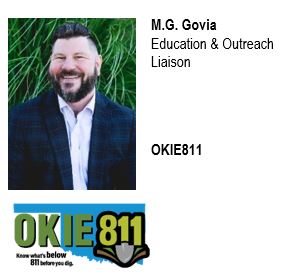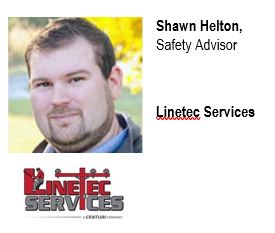Download Full Speaker Bios HERE!

Preventing Injury with Trauma-Informed Workplaces
In this session, attendees will learn what trauma-informed workplaces are, the impact of trauma-informed approaches on injury prevention in the workplace, and how trauma-informed policies can improve economic outcomes. The presentation will detail specific, easy to implement, workplace policies, strategies, and resources to become a trauma- informed Oklahoma business. The session will include information regarding the financial burden of traumatic experiences on businesses; the benefits of workplace initiatives to support employees and implement trauma-informed practices; and the positive outcomes to both businesses and their communities of being a trauma-informed workplace. This presentation is intended to provide education and actionable takeaways across the spectrum of workforce leadership and health/safety program leaders to reduce injury-related morbidity and mortality.

DOI-MMI, Efficient Access to Effective Outcomes
Date of Injury/First Appointment, Hot Line/Health Line/Triage, Telemedicine visit with treatment options. Urgent Care 8 a.m.-7 p.m. 7 days a week. Same day/Next day Orthopedic Access (splint, cast, crutch, brace, x-ray, injection, etc. follow up for nonsurgical dx)
Prescription, Physical Therapy, Special Imaging (3.OT, Wide Bore, Short Core), Rapid response specialists.
Educate practitioners in the ways of Worker’s Compensation. Initially address Causation. Document Return to Work Status at every visit. (TTD only when necessary). Project estimated Maximum Medical Improvement. Release upon achievement of Maximum Medical Improvement and document.

Behavior Based Safety
This presentation will walk you through changing the safety culture of your company by implementing several steps to create a successful Behavior Based Safety program which will improve safety culture. You will learn the seven steps to BBS as well as the roadblocks that prevent a great safety culture. You will learn the roles of management, the roles of your employees, and the methods to correct behavior. BBS focuses on what people do, analyzes why they do it, and then applies research supported intervention strategy to improve what people do.

Foundation of Safety: Understanding the Physical Demands of Work
This session dives into the importance of understanding and documenting the physical demands of jobs and the value this can create throughout your organization, impacting everything from employee management, ergonomics/risk assessment and health/wellness initiatives. Throughout the lifespan of employment, the documented knowledge of job demands aids in supporting informed hiring decisions, medical management and safe return to work for injured employees. When done well, having solid functional job descriptions in place can decrease work-related injuries, and result in fewer workdays lost and lower workers’ compensation costs. Safety professionals from any industry can benefit from building their knowledge and understanding of these concepts.

Learn From My Mistakes: How Unconscious Bias Can Lead to Mistakes in Incident Investigations and Hazard Assessments
This presentation is for anyone involved in EHS investigations and employee engagement. This presentation will identify bias which can be both conscious and unconscious in society and EHS. The presentation will discuss the top bias found during safety investigations and hazard assessments. The presentation will discuss real life incidents that were affected by unconscious bias that the investigators had during investigations.

Active Threat
Run, Hide Fight is a national best practice program for civilians to understand how to respond to an active threat situation. Through a combination of lecture and demonstration participants are trained in the concepts of evacuation, shelter in place and improvised fighting in the event they are faced with an attacker. This training can be used throughout society, workplace, commerce and houses of worship.

Psychological Safety: How Mental Well-Being Impacts Physical Safety
This presentation discusses how physical safety and mental wellbeing are immediately connected. This topic is essential for Safety professionals, HR professionals and business leaders to understand and discuss collectively in order to achieve business goals. Employee wellbeing and company success is truly a symbiotic relationship. During this session, participants will learn what psychological safety is (and isn’t), why it is important for business and how to create a psychologically safe culture within your organization.

Game On!
Join us for a fun and upbeat introduction to some gamification methods you can use to energize your company’s safety training. We will review some of the more common tools/apps and then play a game. BYOP (bring your own phone) because you’ll be using it to play. Points will be awarded based on the speed at which you answer correctly. But don’t sweat it too much, you won’t have to buy a vowel – everything is FREE. Be sure to phone a friend and tell them to come on down and enjoy this brief break from the typical conference slide show.

Time to Review Arc Flash Risk Assessments? NFPA 70E Changes May Impact PPE Best Practices
When did your facility become NFPA 70E compliant? It may be time to review your facility’s arc flash risk assessment, equipment labeling and PPE best practices utilizing sustain-ably manufactured PPE. Changes to the electrical distribution system and the addition of new equipment will likely affect the assessment results, the accuracy of the information on equipment labels and the resultant FR/AR PPE choices. Per NFPA 70E, the assessment needs to be reviewed for accuracy at least every 5 years or when changes occur to the electrical distribution system.

Foundations For Safety Leadership
CPWR developed this training in response to OSHAs requirement to have a leadership component built into OSHA 30 hour classes. It teaches participants about the costs of ineffective, and the benefits of effective safety leadership. Most importantly, it teaches about 5 critical leadership skills they can use on the jobsite to more effectively communicate and work with their team members and how doing so leads to a stronger jobsite safety climate.
This presentaion is a scaled back version of a 3-hour facilitation.

Safe Digging and Damage Prevention
An overview of the Oklahoma Underground Facilities Damage Prevention Act (OUFDPA), current policies and procedures for requesting locates, safe excavation practices, and responsibilities of owner/operators of underground facilities.

Recent Use THC Testing
Presentation focused on the hurdles that THC has created for employers and the decisions they have had to make based on “medicinal” use THC and more importantly the looming legalization.
Introducing an industry first technology that helps close the gaps between recruiting safety, risk, production and how we can all function SAFE (or SAFER) in an era of THC acceptance.

Challenges Facing Young Safety Professionals
(presenting with Charles Hightower, Energy Transfer)
It’s no secret that the world of health and safety has a wide range of challenges. Workplace safety is not a straightforward or easy responsibility to uphold and this can get overwhelming for the professionals who work in the field. It can be particularly challenging for young safety professionals to find their professional footing right out of school. This presentation will provide safety professionals with guidance/advice to avoid some of the common pitfalls that come with being new to the field.
.
Full List of Speakers Here…
Oklahoma City
2400 S. Vermont Ave.
Oklahoma City, Oklahoma 73108
Phone: 405-848-8626
Toll Free: 800-580-SAFT(7238)
Tulsa
9810 E. 42nd St. S. Ste 219 Seminole Bldg.
Tulsa, Oklahoma 74146
Phone: 918-622-4771
Toll Free: 800-622-4771
Oklahoma City
2400 S. Vermont Ave.
Oklahoma City, Oklahoma 73108
Phone: (405) 848-8626
Toll Free: 800-580-SAFT(7238)
Tulsa
9810 E. 42nd St. S. Ste 205 Seminole Bldg.
Tulsa, Oklahoma 74146
Phone: (918) 622-4771
Toll Free: (866) 622-4771
Hugo Satellite OSC Office
2689 US 70 Hwy
Hugo, OK 74743
Phone: (580) 326-9417
Resources
Contact and Locations
Membership
Join Our Email Newsletter
© 2023 Oklahoma Safety Council. All rights reserved.

